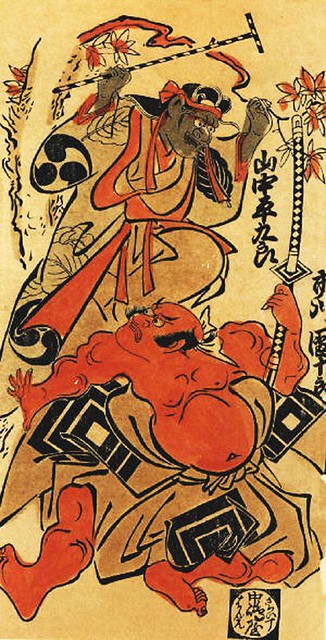
I wanted to try and replicate this aesthetic within my own journal. At first I thought of just doing a wash over all of the pieces of paper which could have been interesting but it would have taken a long time and made a lot of the pages very crinkly. And even though this is an important aesthetic from that era, it's not the only one. There are some prints you can find with a simple white background. However, I wanted to try and recreate this look in some of my pieces which I think I did quite successfully as you can see here:
This is an illustration that you would see mainly on a fan for decoration. I wanted to try and work within a border because I thought it was interesting how it can be recreated with woodblock print.
Although this one doesn't have the sepia background, I wanted to try something different and just incorporate the colour. I think it worked out really well and the contrast of the blue and the yellow is really striking.
Here I wanted to show that the back of the lantern has the sepia tone, whereas the face is supposed to be white because it is a 'yokai' which is a Japanese mythological ghost.
A scene from a book that I saw. I'm not sure if I like how this one came out because I think that it has more african vibes to japanese, i'm not really sure what I did wrong but I would have to revisit this again if I wanted to try and do the same scene. I think the type of tree that I used doesn't fit with the Japanese era.
The famous NAMAZU catfish. He is the earthshaker, set to destroy Japan when he wiggles. I really like how this one came out because it has the sepia toned background and the simple ink drawing aesthetic that I think I successfully captured.
All in all, i think these drawings have helped me to understand how sepia tone backgrounds can help to communicate different ideas. It looks more 'traditional' and washed out. Is this the message they want to get across? Or is it just the a type of paper that they used?






No comments:
Post a Comment